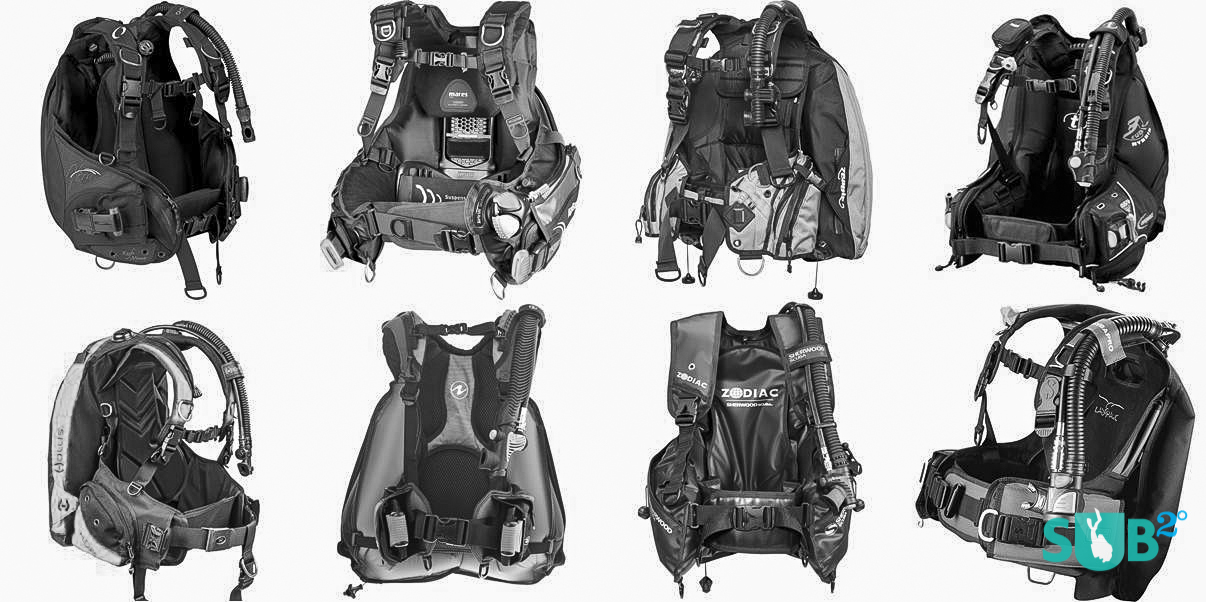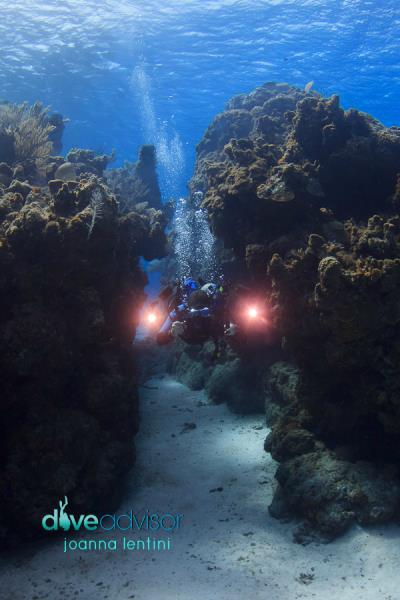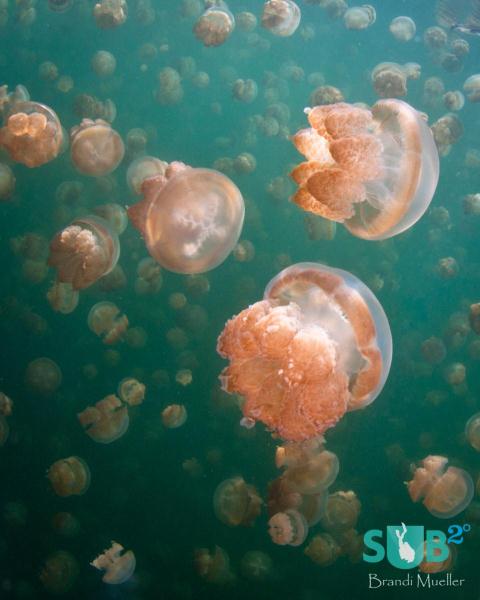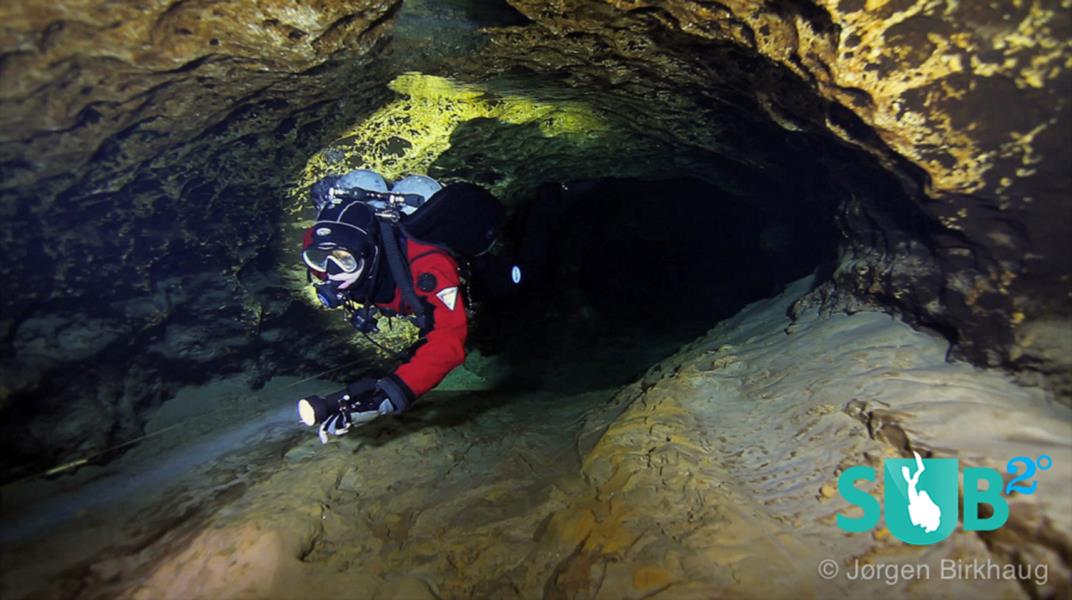
Published
June 14,
2014
BCDs Part 1
Buoyancy control devices, or BCDs, are an integral part of dive gear because they help a diver establish neutral buoyancy underwater and positive buoyancy at the surface. Also known as buoyancy compensating devices, BCs, jackets, wings, air cells, or bladders, the BCD allows a diver to add and release air to maintain proper buoyancy while diving and holding the tank.
While underwater, a diver wants to maintain neutral buoyancy or be in a state where they are not sinking to the bottom or uncontrollably ascending to the surface. Adding or releasing air can achieve a neutral state, which reduces the energy a diver exerts and protects the delicate marine environment from a diver crashing into the reef.
As a diver descends, increased pressure causes compression, which can lead to negative buoyancy. This can be overcome by adding air to the BCD. On ascent the reverse happens, and any air already in the BCD will expand, causing positive buoyancy and a diver rapidly ascending. By releasing air from the BCD, the diver can slowly and controllably ascend to the surface. On the surface, a diver wants to be positively buoyant to reduce stress and effort while returning to a boat or shore, and inflating the BCD can do this.
Types of BCDs
BCDs have changed over the years, from mere straps holding a tank to horse collar type harnesses with inflation around the neck like a lifejacket. These days comfort and ergonomics play a role in the ever-evolving design of BCDs. Currently there are two major styles: the jacket and the back plate/wing style.
Jacket Style
The jacket or vest BCD is the most popular and worn like a jacket around the upper torso. The tank attaches to the back with at least one strap and the air bladder extends throughout, including under the arms and around the waist. These are great for recreational divers, especially new divers, because they are comfortable and easy to control.
These BCDs are great at the surface where they help the diver maintain a head-up position. A disadvantage is that underwater they sometimes put a diver in a standing-up position instead of a streamlined horizontal position. They are also bulky and some divers find them uncomfortable when fully inflated, as they may put pressure around the waist.
Some jacket BCDs only have the air cell on the back, and it does not extend to the waist. This helps maintain a horizontal position underwater and reduces the ‘tight’ feeling when fully inflated. One disadvantage is when inflated on the surface the air cell behind the diver may feel as if it is pushing the head face down instead of keeping the diver upright like the other jacket style does.
Back Plates and Wings
Popular with technical divers and minimalists, back plates and wings have the air bladder on the back only. Often there is a metal plate so that the tank and bladder attached and straps are minimal. This style of BCDs makes it easier to carry multiple tanks and to adjust the tank position such as for side-mounted tanks. These are great to help divers achieve the perfect horizontal position underwater.
Back plates can be useful to reduce the amount of free weight a diver needs to carry (as they usually weigh several pounds) and the weight is distributed more evenly along the divers entire back, often leading to better buoyancy control. Unfortunately this feature makes them heavy, which can be a disadvantage for travelers.
BCD Options
Integrated Weight Systems – Some BCDs have weight pockets, allowing a diver to forego the weight belt. They usually consist of two weight pockets located on the front of the BCD near the hips with quick release systems (to ditch weights if necessary). Some also have smaller pockets on the back of the BCD for a small amount of trip weights or a pocket on the tank strap. These weights cannot be easily released but help to evenly distribute the weight.
Many divers prefer the integrated system because the weights cannot slide around, as they may on a weight belt, and many find weight belts uncomfortable. It is important to know how to release weight pockets (which can be different depending on the BCD) as the mechanism may be more difficult than unbuckling a weight belt.
Integrated Alternate Air Systems – To help streamline gear, some companies integrate the alternate air source into the low-pressure inflator. This way the inflator serves to inflate and deflate the BCD and also serves as the octopus, complete with a comfortable mouthpiece and purge button. In the case of an emergency, the diver will give their primary air source to their distressed buddy and use the integrated alternate as their regulator (because it is on such a short hose).
Disadvantages of the integrated system include the slight discomfort a diver may find having to give up their primary air source, as opposed to handing over an octopus they are not currently using. The hose of the integrated system is also very short, making it difficult to turn the head very far when using it.
For more BCD options, how to prevent problems, and what to look for in buying a BCD, check out Part 2.
Featured Posts
-

Zip Diving in little cayman
Have you ever wished for a little extra boost underwater? Perhaps you are exhausted and your legs need a break or maybe you would like to further propel your fin kicks to keep pace with some elusive marine life. There are ma...
-

Jellyfish Lake in Palau
Snorkel with millions of non-stinging jellyfish in Palau's Jellyfish Lake.
-

Cave Diving in Florida
Florida is one of the world’s premier destinations for cave diving and Devil’s Eye cave system should be on any cave divers list of places to dive when visiting the region.


Load more comments